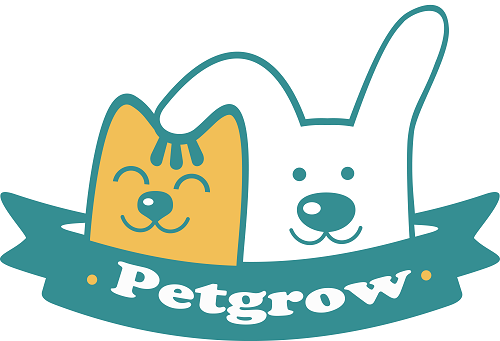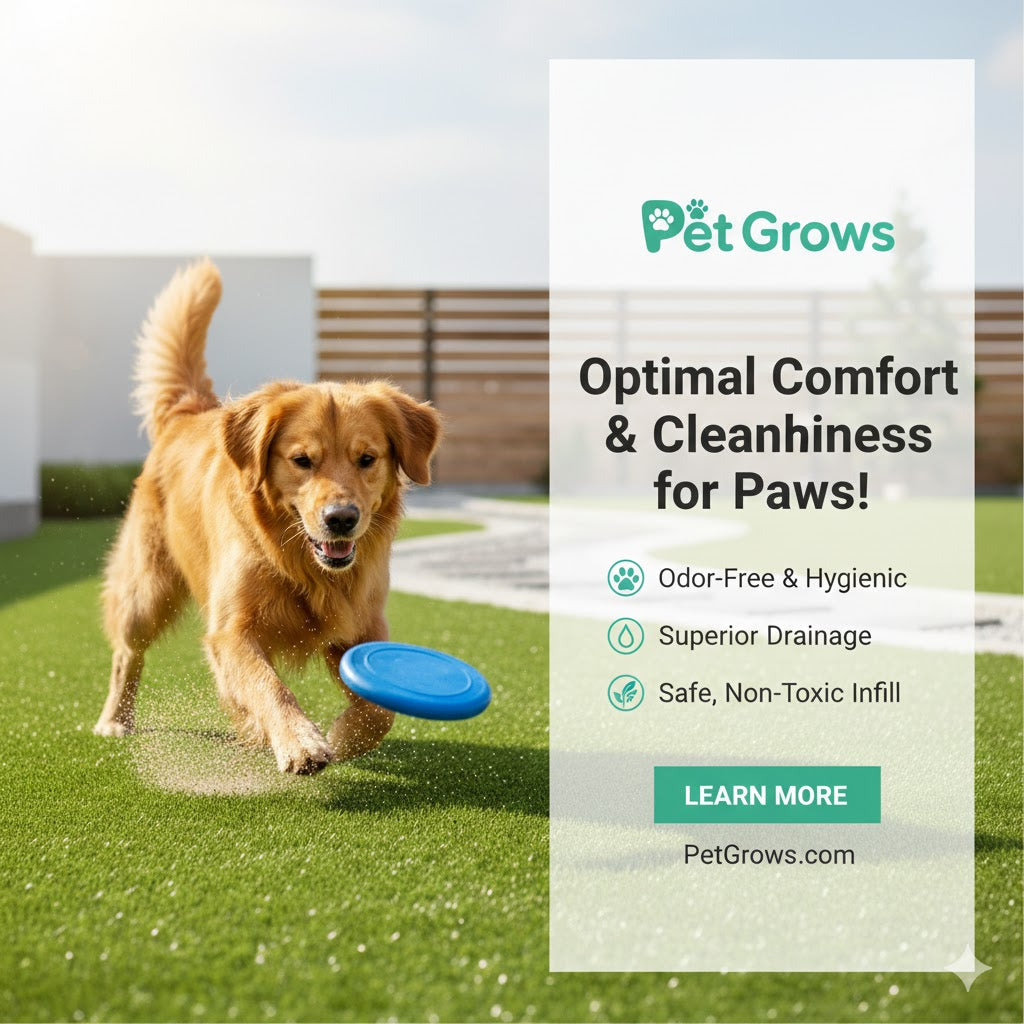Dogs and yards go hand in hand, and artificial infill for dogs makes that bond even better. Natural grass often turns muddy, smells bad after rain, and wears out under heavy paw traffic. Artificial turf with the right infill solves all these problems.
Infill is the small material placed between the blades of synthetic turf. It helps the grass stand upright, improves drainage, and keeps odors under control. The right infill also adds softness for paws and safety for play. With proper care, it creates a clean, cool, and low-maintenance yard your dogs will love all year long.
What Is Artificial Infill for Dogs and Why It Matters
Artificial infill for dogs is the small material that sits between the blades of artificial grass. It can be sand, coated sand, or small minerals. Infill helps the turf stay upright, soft, and safe.
Without infill, the grass would flatten fast. It also wouldn’t drain water or pet urine well. Good infill improves the drainage system, keeps the turf cooler, and reduces smells from pet waste.
For pet turf, infill does more than just fill space. It protects your dog’s paws, keeps the surface clean, and stops the turf from moving. That means less mud, no holes, and a cleaner home.
Compared to natural grass, synthetic turf with the right infill is easier to clean and needs less water. It’s a low-maintenance choice that still looks green and neat.
Artificial Infill for Dogs vs. Natural Grass: Hygiene, Drainage, and Everyday Use
Natural grass looks nice, but it needs care. Dogs dig, pee, and wear it down fast. That means mud, smells, and brown spots.
Artificial turf with good infill fixes most of that. The infill helps move urine and rain through the drainage layer instead of letting it sit on top. A fully permeable backing and drainage grids under the turf push water down into the soil or base layer. Artificial turf supports water-efficient landscaping practices that help homeowners save thousands of gallons each year compared to watering natural lawns.
Artificial grass also helps control bacteria from pet waste. Natural grass can trap moisture, which makes odors worse. Infill with antimicrobial protection helps reduce bacteria growth and keeps the turf cleaner.
In hot weather, natural grass cools itself through water use. Artificial turf uses cooling infill materials to stay cooler without wasting water. That’s better for water conservation and long-term cost savings.
Overall, synthetic turf is cleaner and easier for pet owners to manage every day.

Best Types of Artificial Infill for Dogs (Pros, Cons, and Use Cases)
Choosing the right artificial infill for dogs makes your turf cleaner, cooler, and safer. Each infill type helps with odor, drainage, and comfort in a different way. The table below shows how each one works and when to use it.
|
Infill Type |
How It Works |
Pros |
Cons |
Best For |
|
Zeolite (ZeoFill / ZeoLite) |
Natural volcanic mineral that traps ammonia from pet urine |
Strong odor control; helps cooling; non-toxic and safe |
Needs rinsing every few weeks; best as top layer |
Small yards or light-use pet turf |
|
Acrylic-Coated Sand (Envirofill / Durafill) |
Rounded quartz coated with antimicrobial protection |
Stops bacteria growth; resists compaction; soft for paws |
Costs more than sand or zeolite |
Busy dog runs and dog parks |
|
Silica Sand (Uncoated) |
Basic sand infill that supports turf blades |
Cheap; easy to find |
Traps odors; can harden and slow drainage |
Decorative turf with little pet traffic |
|
Organic Infill (Safeshell, cork, coconut fiber) |
Made from natural shells or wood fiber |
Cooler surface; eco-friendly; soft feel |
Breaks down over time; needs topping up |
Eco-focused pet owners |
|
Crumb Rubber / EPDM Rubber |
Recycled rubber pellets |
Soft and bouncy |
Gets hot, smells bad, may track indoors |
Not ideal for artificial pet turf |
Good artificial infill for dogs also depends on a strong drainage system and quality permeable backing.
If you want top results, use zeolite for odor control or acrylic-coated sand for long-term hygiene and durability.
How to Choose Artificial Infill for Dogs by Scenario
Not all backyards or dogs are the same. The best artificial infill for dogs depends on your space, number of pets, and local weather. Let’s go through a few common situations step by step.
Small Yards with One or Two Dogs
If you have a small yard and one or two pets, zeolite is your best pick. It traps smells and keeps your turf clean between rinses. Spray an enzyme turf deodorizer once or twice a month. Rinse weekly to wash away urine and dirt. This setup is low-cost and easy to manage.
Multi-Dog Homes or Play Facilities
If you have many dogs or run a daycare, go with acrylic-coated sand such as Envirofill or Durafill. This type of artificial infill for dogs has antimicrobial protection that reduces bacteria and odor. Add a thin top layer of zeolite for extra smell control. Brush the turf weekly to lift the blades and keep drainage strong.
Hot and Sunny Climates
In warm areas, use cooling infill materials like coated sand or cork. These stay cooler under direct sunlight. Choose UV-resistant materials and rinse the turf on very hot days to protect your dog’s paws.
Budget-Friendly Installations
If you want to save money, mix regular silica sand with a little zeolite. This combo still helps with odor control but costs less. Just be sure to rinse it often, since plain sand can trap smells over time.
Eco-Friendly or Allergy-Safe Options
For eco homes or sensitive pets, organic infill like Safeshell or cork is a great pick. It’s natural, soft on paws, and safe for kids. You’ll need to top it up every one to two years, but it keeps the turf clean and chemical-free.
Choosing the right artificial infill for dogs is about matching your pet’s habits and your care routine. A little planning now will save time, money, and odor problems later.
The Pet-Friendly Turf Stack: Base, Drainage System, and Backing
A strong turf system is more than just fake grass and infill. The layers underneath make all the difference. A solid base and good drainage system keep your turf clean, dry, and safe for pets.
Sub-Base and Base Material
The foundation starts with the base material, usually crushed rock or gravel. This layer supports the turf and helps water drain quickly. The base must be even and compacted. If it’s uneven, water can pool, and odors from pet waste can build up.
Drainage System and Backing
Next comes the drainage layer. Some systems use drainage grids or pipes under the turf to move water away fast. On top of that is the turf’s permeable backing. This backing lets urine and rain pass through easily instead of sitting on the surface. A fully permeable backing is best for dog areas because it prevents smells and bacteria growth.
Pile Height and Face Weight
The turf carpet itself matters too. Choose a pile height around 1 to 1.25 inches for pets. It’s short enough for easy cleanup but still soft for paws. The face weight, how thick the turf is should be moderate, not too dense. That balance keeps your turf easy to rinse and brush.
A well-built turf stack supports your artificial infill for dogs and keeps your yard cleaner. It makes the difference between turf that smells bad and turf that lasts for years.

Safety, Certifications, and Materials Transparency
When you choose artificial infill for dogs, safety should come first. Dogs spend a lot of time lying, sniffing, and playing on the turf. The materials must be clean, tested, and pet-safe.
Look for turf and infill products that are lead-free and non-toxic. Many trusted brands list their safety certifications on product labels or websites. Check if they follow standards from groups like the Synthetic Turf Council or the American Veterinary Medical Association. These groups set clear rules for safe turf materials.
Avoid infills made from crumb rubber or recycled tires. They can get very hot and may contain chemicals that harm air quality. Instead, pick options like acrylic-coated sand, zeolite, or organic infill. These are proven safe for pets and people.
You can also ask your installer or turf supplier for a safety sheet. It lists the product ingredients and any antimicrobial coatings used. Transparency helps you know exactly what goes into your turf system.
Costs and Long-Term Value of Pet Turf Systems
Installing artificial infill for dogs costs more at first than planting grass, but it saves money later. You won’t need water, fertilizer, or lawn-care equipment. That means lower bills and less work year-round.
The total cost depends on your turf type, base material, and installation size. Adding acrylic-coated sand or zeolite infill can raise the price slightly, but they last for years with little upkeep. A typical backyard install may range from a few thousand dollars, depending on labor and installation fees.
The real savings show over time. You’ll avoid mowing, watering, and repairing bare patches from pet traffic. You’ll also use less water, which supports water conservation and reduces costs during hot months.
Good-quality turf and infill can last 10 to 15 years with simple care. That’s long-term cost savings compared to natural grass, which needs constant maintenance.
Conclusion
The best artificial infill for dogs depends on what matters most to you odor control, comfort, cost, or safety.
If smell is your biggest problem, pick zeolite. It traps ammonia from urine and keeps the yard fresh. If you want a longer-lasting and cleaner surface, choose acrylic-coated sand. It has antimicrobial protection, drains fast, and feels soft on paws.
For eco-friendly homes, organic infills like Safeshell or cork are safe, natural, and cool. Just remember to top it up every year or two. Avoid crumb rubber or plain sand if pets use the turf often; they trap heat and odors.
Whichever type you choose, make sure your turf has a solid drainage system and a permeable backing. A good base helps any infill work better and last longer.


Share:
What is pet turf and its benefits? A Full Explanation
Eco Friendly Artificial Grass Guide: Safe, Non-Toxic & Sustainable Turf